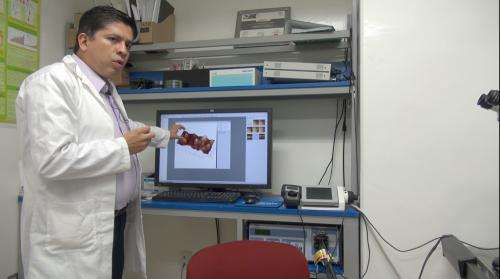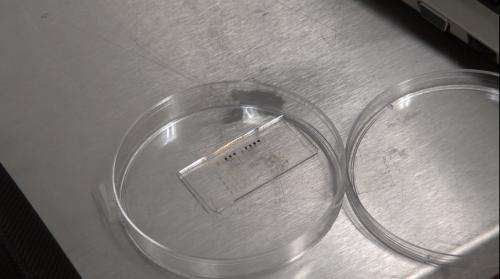Brand new technology detects probiotic organisms in food

In the food industr, ity is very important to ensure the quality and safety of products consumed by the population to improve their properties and reduce foodborne illness. Therefore, a team of Mexican researchers developed a sensing microbiosensor that detects beneficial bacteria. This micromechanical device, which is known for being inexpensive, fast, selective and reliable, is the first of its kind manufactured in the country, and has been used to evaluate the growth of L. plantarum 299vm, a probiotic microorganism useful in the development of fermented dairy products.
The biosensor is able to monitor the growth of about 400 cells in just 30 minutes, compared with the traditional method that requires at least 24 hours of incubation.
This technology, which has potential application in the food industry and the health sector, was developed by specialists of the National Polytechnic Institute (IPN) in collaboration with the Mexican Oil Institute (IMP) and the development of the research project obtained the National Award for Food Science and Technology 2013 (PNCTA) in the Professional Category of Food Technology, which has been organized for the last 38 years by the National Council for Science and Technology (CONACYT) and the Mexican Industry Coca-Cola.
Jorge Perez Chanona, researcher at the National School of Biological Sciences (ENCB) at IPN, indicates that these devices have high sensitivity and will soon be portable and inexpensive.
"We have built the microbiosensor as a pilot to evaluate its potential in biosensing bacteria; the device is based on the resonance advantage of a lever or beam (holder chip) of micron size, to evaluate small changes in mass of the order of nanograms (which is the approximate weight of a bacterium)."

Chanona Pérez explains that the microbiosensor was built with a holder chip supporting a fabricated silicon beam of 125 microns long by 50 wide and 4 of thickness.
The holder chip is chemically and biologically modified and microcapillaries were used to coat the substrate with a specific growth of lactic acid bacteria, then inoculated with the "problem" sample, and the beam was vibrated at a specific resonance frequency matching the atomic scanner microscope, which allows monitoring the damping experienced by the holder chip due to small mass changes that occur when microorganisms grow on its surface, similar to the behavior of a trampoline when you add more weight, thus detecting possible bacterial growth dynamics within minutes of inoculation.
The IPN specialist details that besides these beneficial bacteria, micro and nano-biosensors can detect other microorganisms as pathogens; fungi; yeast; infectious agents (viruses); toxins; pollution particles and biomolecules, from different sources, such as water, air, soil or food.
The percentage of biosensors based on micro and nanotechnology for marketed food is still minimal, the country is just beginning to work in biological or medical applications, making it a field of opportunities for the development of basic science and technological innovation.
The construction of the microbiosensor was conceived four years ago and was the result of the thesis work of Angelica Gabriela Mendoza Madrigal. It required a multidisciplinary team of specialists, in which researchers Juan Vicente Mendez, Georgina Calderon Dominguez, Eduardo Palacios Gonzalez and Humberto Hernandez Sanchez, studying the doctorate in food, at the National School of Biological Sciences, from the Center for Nanoscience and Micro and Nanotechnologies participated, and the Mexican Oil Institute.
This was the first award handed by the PNCTA related to the area of micro and nanotechnology, in order to motivate and stimulate the generation of expertise and human resources in these disciplines and foster technological contributions in the areas of knowledge of the food and beverages industry.
Provided by Investigación y Desarrollo


















